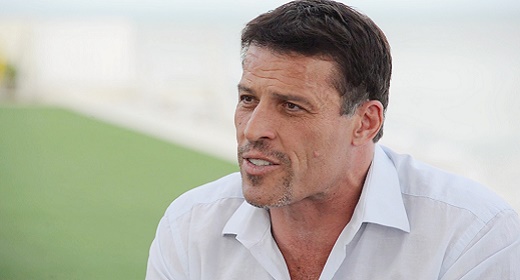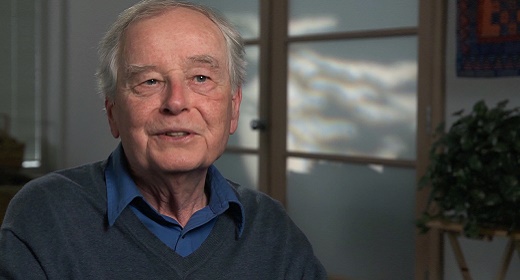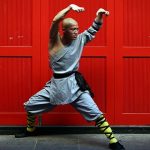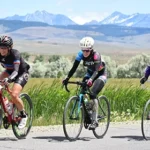by Alison Feller: Why you should trade your running shoes for a yoga mat every once in a while…
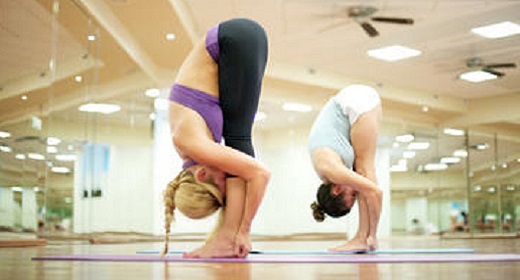
The scene: Sunday brunch. You just finished your long run, and your BFF comes to meet you straight from her favorite yoga class. You’re exhausted and ready for a nap, while she looks fresh and is practically glowing. “You should really come to yoga with me sometime,” she says. Your response? “No. I can’t do yoga. I’m not flexible.”
It’s a classic reactionary runner response: We can run for hours at a time, but the thought of spending quality time in Downward Dog is equal parts intimidating and possibly crazy. (How do people get their heels to touch the ground in that pose?!) But put that excuse aside and give yoga a chance—not only will it make you a stronger and more well-rounded athlete, it’ll also deliver a whole host of mental benefits that will come in handy the next time you’re at mile 20 of a marathon and think you just. can’t. go. on. (Need more mental strength? Try these 11 Mantras That Will Get You Through Any Run.)
We enlisted Sarajean Rudman, a runner and 500-hour certified yoga instructor at the Kripalu Center for Yoga & Health, to break down why runners should get their om on. “I’m diligent about my commitment to yoga and running, and rarely miss a day,” she says. “If I don’t begin my day with my yoga practice and a run out in nature, I feel a little off and incomplete. The merging of nature and asana with meditation and mindfulness is the exact medicine I need.” #preach
Why should runners do yoga?
1. It’ll make you stronger physically.
buzzworthy
Flexibility and strength needed to run injury-free,” says Rudman. “It’ll also provide the rest, relaxation, and restoration you need to recovery from a hard training schedule. Dynamic and flow-style classes increase flexibility long-term—so things like sun salutations and vinyasa-style classes are great for increasing flexibility using weight-barring movements through the full range of motion in your joints. Pair these kinds of classes with a restorative or yin-style class, which use longer holds to help break up the fascia that tears and repairs from hard exercise.”
2. The psychological benefits are huge.
“Yoga invites you into the present moment,” Rudman says. “It offers you guidance on how to be aware of your breath and use it as a bridge between the mind and body. It also helps you get out of your mind and into the world or the moment. When runners are out on the trails, for example, it’s important to have these tools of psychological awareness. It creates a more mindful, healing run, instead of an obligatory and thought-filled one. Yoga keeps you in the now.” (In other words, you’ll learn to run the mile you’re in—instead of stressing about mile 20 and beyond.)
3. Emotionally, yoga may be just what you may need.
“Using the tools of observation offered through mindfulness practices, we’re able to detach from our emotions and observe them,” says Rudman. “This is beneficial to a runner who is, let’s say, running a long distance for the first time. Maybe at mile 15, you want to give up—but then you’re able to take a step back and observe that thought. Maybe you recognize that voice as something that’s not authentic to your true mission and your values, so you keep going.
OK, sold! So when it comes to yoga for runners, what kind of yoga class or practice is best?
“Having a good balance of a dynamic practice and a restorative one is super important for the overall efficacy of the yoga intervention,” says Rudman. “I believe runners should opt for both vinyasa-style classes and restorative ones. Vinyasa classes will help improve dynamic core stability, which is paramount to being a successful runner, while restorative classes will help alleviate fascial imbalances and can aid in overall emotional and mental relaxation.” (Consider a sports massage in between.
What are the most common mistakes runners make when they start doing yoga?
“They treat it like a workout,” says Rudman. “There’s a ‘no pain, no gain’ mentality, which leads them to push too hard and get hurt. Yoga will make you stronger, that’s for sure—but it does so in a more passive way. It’s about walking up to an edge, being present for the discomfort—not pain—and getting to the other side while breathing calmly. Save the workout for the track, and let yoga be about the flow of energy through your body.”
What would you say to the runner who says, “I can’t do yoga—I can’t even touch my toes?”
“That’s like saying, ‘I can’t shower—I’m too dirty!’ It’s all the more reason to come to yoga,” says Rudman. “And it’s not about touching your toes. You may never touch your toes, and that’s OK. Yoga isn’t about getting anywhere specific. It’s about meeting yourself right where you are, recognizing what you need, and giving it to yourself in a compassionate way. It’s about growing and becoming aware of your body and your mind through the poses. The flexibility is a bonus.”



